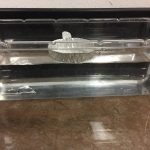There will be a quiz on LS3 lessons 4-6 Wednesday, February 8
Vocabulary covered:
trait: characteristics of an organism (e.g.) tongue rollers, PTC tasters, widow’s peak
variation: Differences in a trait
inherited traits: Traits you are born with that came from the previous generation
gamete: sex cell, sperm or egg which has 1/2 the number of chromosomes as other body cells
meiosis: a cell division process that results in gametes with one chromosome from each parents pairs of chromosomes
allele: variation in DNA at a specific location that has instructions for a specific variation of a trait
gene: a section of a chromosomes that has instructions for a trait (eg: go create pigment or melanin)
fertilization: the process where chromosomes from 2 gametes (sperm and egg) combine to make offspring
phenotype: describes an organisms trait in words (e.g. tongue roller, purple)
genotype: symbols representing alleles (eg, (t, nt or p, np)
chromosome: a strand of DNA packaged into threadlike material found in the nucleus of a cell
DNA: a molecule that makes up chromosomes and carries genetic information in the form of alleles
Understand the process used to fill out the alleles in the pedigree’s on pages 77 & 78
You should be familiar with the C-notes you took on DNA, meiosis and fertilization and how traits get passed down to the next generation

